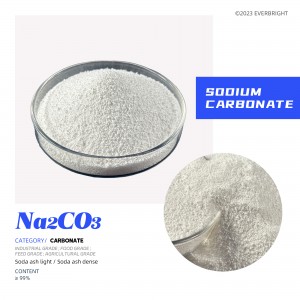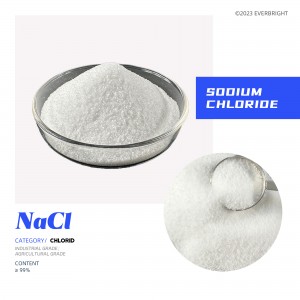-

Sodium Carbonate
Inorganic compound soda ash, but classified as salt, not alkali. Sodium carbonate is a white powder, tasteless and odorless, easily soluble in water, aqueous solution is strongly alkaline, in humid air will absorb moisture clumps, part of the sodium bicarbonate. The preparation of sodium carbonate includes the joint alkali process, the ammonia alkali process, the Lubran process, etc., and it can also be processed and refined by trona.
-

Selenium
Selenium conducts electricity and heat. The electrical conductivity changes sharply with the intensity of light and is a photoconductive material. It can react directly with hydrogen and halogen, and react with metal to produce selenide.
-

Potassium Carbonate
An inorganic substance, dissolved as a white crystalline powder, soluble in water, alkaline in aqueous solution, insoluble in ethanol, acetone, and ether. Strong hygroscopic, exposed to the air can absorb carbon dioxide and water, into potassium bicarbonate.
-

Sodium Sulfate
Sodium sulfate is sulfate and sodium ion synthesis of salt, sodium sulfate soluble in water, its solution is mostly neutral, soluble in glycerol but not soluble in ethanol. Inorganic compounds, high purity, fine particles of anhydrous matter called sodium powder. White, odorless, bitter, hygroscopic. The shape is colorless, transparent, large crystals or small granular crystals. Sodium sulfate is easy to absorb water when exposed to air, resulting in sodium sulfate decahydrate, also known as glauborite, which is alkaline.
-

Sodium Silicate
Sodium silicate is a kind of inorganic silicate, commonly known as pyrophorine. Na2O·nSiO2 formed by dry casting is massive and transparent, while Na2O·nSiO2 formed by wet water quenching is granular, which can be used only when converted into liquid Na2O·nSiO2. Common Na2O·nSiO2 solid products are: ① bulk solid, ② powdered solid, ③ instant sodium silicate, ④ zero water sodium metasilicate, ⑤ sodium pentahydrate metasilicate, ⑥ sodium orthosilicate.
-

Calcium Chloride
It’s a chemical made of chlorine and calcium, slightly bitter. It is a typical ionic halide, white, hard fragments or particles at room temperature. Common applications include brine for refrigeration equipment, road deicing agents and desiccant.
-

Sodium Chloride
Its source is mainly seawater, which is the main component of salt. Soluble in water, glycerin, slightly soluble in ethanol (alcohol), liquid ammonia; Insoluble in concentrated hydrochloric acid. Impure sodium chloride is deliquescent in air. The stability is relatively good, its aqueous solution is neutral, and the industry generally uses the method of electrolytic saturated sodium chloride solution to produce hydrogen, chlorine and caustic soda (sodium hydroxide) and other chemical products (generally known as chlor-alkali industry) can also be used for ore smelting (electrolytic molten sodium chloride crystals to produce active sodium metal).
-

Boric Acid
It is a white crystalline powder, with a smooth feel and no odor. Its acidic source is not to give protons by itself. Because boron is an electron deficient atom, it can add hydroxide ions of water molecules and release protons. Taking advantage of this electron-deficient property, polyhydroxyl compounds (such as glycerol and glycerol, etc.) are added to form stable complexes to strengthen their acidity.







